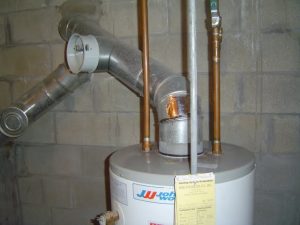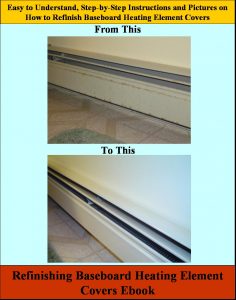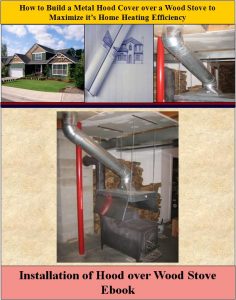High Water Heater Pressure and Temperature are Relieved with Water Heater Pressure Relief Valves, and Water Heater Pressure Relief Valve Leaking after Testing
By Mark J. Donovan
|
|
What is a Pressure Relieve Valve?
A water heater pressure relief valve is a safety valve, commonly referred to as a Temperature and Pressure Relief valve (TPR valve), that protects a water heater from potentially exploding. When pressure or temperature exceed the rating limits of the water heater pressure relief valve, the valve opens up and releases hot pressurized water from the water heater. |
A water heater pressure relief valve is located on the side of a water heater and typically has a discharge tube connected to it to direct scalding hot water downwards.
Causes of a Leaking Water Heater Pressure Relief Valve
If the water heater pressure relief valve is dripping water, rather than gushing it, it could be caused by either a faulty TPR valve, or the water heater is beginning to exceed the rating limits of the water heater pressure relief valve.
Chances are if you have not been working on the water heater or plumbing it is just a faulty water heater pressure relief valve. Regardless of what caused the TPR to leak it needs to be fixed immediately.
Replacing Water Heater Pressure Relief Valves
Replacing water heater pressure relief valves is pretty straight forward, however you will need a large adjustable wrench or crescent wrench, a hose, bucket, and some plumbers tape.
Note: It is important to check the new water heater pressure relief valve after replacing the old one. Water heater pressure relief valve leaking after testing is a common phenomena, even in a newly installed one, so make sure to check that there is no slow leak.
To replace a water heater pressure valve, first turn power off to the water heater and turn the cold water inlet supply line valve off.
Simply empty enough to get below the level of the water heater pressure relief valve. When you believe you have emptied enough water from the water heater tank, shut the drain valve and hot water faucet off.
Once you have drained off enough water from water heater, remove the discharge tube. Next, use the adjustable wrench to remove the water heater pressure relief valve.
Take the old water heater pressure relief valve to your local hardware store and find an equivalent replacement.
| Make sure you buy a replacement water heater pressure relief valve that is rated for the same pressure and temperature as your old one.
Prior to installing the new water heater pressure relief valve, wrap some plumbers tape around the threads of the valve. The plumbers tape will help to prevent any leaks around the threads. |
 |
Hand thread the new water heater pressure relief valve into the water heater and then tighten it snuggly with an adjustable wrench. Then reattach the discharge tube.
Finally, disconnect the garden hose, and turn on the cold water supply line valve, and power to the water heater. With any luck your leaky water heater pressure relief valve should be history. If the new one begins to leak then call in a plumber to see why the water heater is overheating and over-pressurizing.
Testing Water Heater Pressure Relief Valves
Hot water heater pressure relief valves have a lever on them so that you can test them to see if they are working properly. Have a bucket handy when pulling on this lever, and do not pull on it when the water inside the water heater is hot. Note that sometimes after testing a water heater pressure relief valve it may not entirely close and seal properly again. This is particularly true on older TPR valves, due to the fact that mineral content that may have collected on the internal parts of the valve prevent the water heater pressure relief valve from fully closing.
Water Heater Pressure Relief Valve Leaking after Testing
If a slow leak persists after testing your water heater pressure relief valve, you will have no choice but to replace it.
For information on Restoring Baseboard Heating Element Covers, see the Restoring Baseboard Heating Element Covers eBook from HomeAdditionPlus.com. The Restoring Baseboard Heating Element Covers Ebook provides easy to understand, step-by-step instructions, on how to restore Baseboard Heating Element Covers so that they look new again. Pictures are included for every key step in the process.
For information on how to maximize a wood stove’s heating efficiency, see HomeAdditionPlus.com’s Installation of Hood over Wood Stove eBook.
Related Information
- How to Drain and Flush a Water Heater
- Buderus Boiler and Riello Burner Installation Review
- How to Choose a Gas Water Heater
Additional Heating and Cooling Resources from Amazon.com
 |
 |
Free Heating and Cooling Price Quotes with No Obligation!
Fill out our 3-5 minute quick and easy form, and receive a free price quote on heating & cooling from one of our pre-screened and licensed HVAC contractors. This process is free and there is no obligation to continue once you receive your heating & cooling price estimate.



